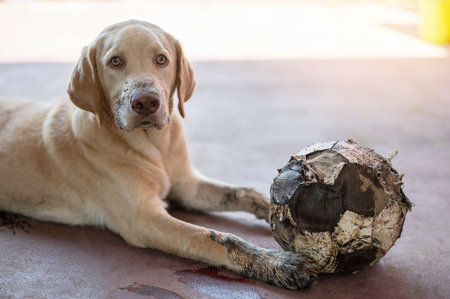1. Understanding Respiratory Infections in Exotic Pets
Respiratory infections can be a serious health concern for exotic pets. These infections affect the lungs, airways, and sinuses, making it difficult for pets to breathe properly. Unlike common household pets such as cats and dogs, exotic animals often have unique respiratory systems that make diagnosing and treating infections more challenging.
What Are Respiratory Infections?
A respiratory infection is caused by bacteria, viruses, fungi, or parasites that invade an animal’s respiratory system. These infections can range from mild to severe and may lead to complications if left untreated. Some common symptoms of respiratory infections in exotic pets include:
| Symptom | Description |
|---|---|
| Labored breathing | Difficulty inhaling or exhaling, sometimes with wheezing sounds. |
| Nasal discharge | Mucus or pus coming from the nostrils. |
| Coughing or sneezing | Frequent sneezes or coughs that indicate irritation or infection. |
| Lethargy | Lack of energy and reduced activity levels. |
| Poor appetite | A noticeable decrease in food intake. |
Why Are Exotic Pets More Susceptible?
Exotic pets often have specialized care requirements that make them more vulnerable to respiratory infections. Factors such as improper humidity levels, inadequate ventilation, and stress can weaken their immune systems. Additionally, many exotic species hide signs of illness until the condition becomes severe, making early detection difficult.
The Challenge of Diagnosis and Treatment
Treating respiratory infections in exotic pets can be more complicated than in traditional pets. Many veterinarians specialize in dogs and cats but may not have extensive experience with exotic species. This makes finding proper medical care essential for pet owners. Diagnostic tools such as X-rays, blood tests, and cultures may be needed to identify the cause of the infection accurately.
The Importance of Early Intervention
If you suspect your exotic pet has a respiratory infection, seeking veterinary care as soon as possible is crucial. Delayed treatment can lead to severe complications, including pneumonia or organ failure. Providing a clean environment, maintaining proper temperature and humidity levels, and reducing stress can help prevent infections before they start.
2. Common Causes of Respiratory Infections
Respiratory infections in exotic pets can stem from a variety of sources, including bacterial, viral, and fungal pathogens, as well as environmental factors. Understanding these causes can help pet owners take preventive measures to keep their pets healthy.
Bacterial Infections
Bacteria are one of the most common causes of respiratory illnesses in exotic pets. Species such as Pseudomonas, Mycoplasma, and Bordetella can cause serious infections, leading to symptoms like nasal discharge, labored breathing, and lethargy. These infections often arise due to poor hygiene, stress, or close contact with infected animals.
Viral Infections
Viruses can also play a major role in respiratory diseases. Some viruses specifically affect certain exotic species, such as ferrets, birds, and reptiles. Viral infections are typically harder to treat than bacterial ones and often require supportive care rather than direct treatment.
Common Viral Causes by Pet Type
| Pet Type | Common Viruses |
|---|---|
| Ferrets | Canine distemper virus, influenza |
| Birds | Avian influenza, polyomavirus |
| Reptiles | Adenovirus, herpesvirus |
Fungal Infections
Fungal respiratory infections are less common but can be severe when they occur. Aspergillosis is a well-known fungal disease that affects birds and some reptiles. Fungal spores thrive in damp environments with poor ventilation, making proper habitat maintenance crucial.
Environmental Factors
Poor husbandry is one of the leading contributors to respiratory infections in exotic pets. Issues such as inadequate ventilation, excessive humidity, unclean enclosures, and exposure to irritants like smoke or strong chemicals can weaken an animal’s immune system and make them more susceptible to infections.
Poor Husbandry Practices That Increase Risk
- Lack of proper airflow in enclosures
- Bedding that retains excessive moisture
- Dusty or moldy environments
- Exposure to cigarette smoke or aerosols
By addressing these risk factors and maintaining a clean and well-ventilated environment, pet owners can significantly reduce the likelihood of respiratory infections in their exotic animals.

3. Recognizing Symptoms and When to Seek Veterinary Care
Respiratory infections in exotic pets can quickly become serious if not addressed early. As a pet owner, recognizing the warning signs is crucial to ensuring your pet gets the care they need. Below are key symptoms to watch for and guidance on when to seek veterinary attention.
Common Symptoms of Respiratory Infections
If your exotic pet is experiencing a respiratory infection, you may notice one or more of the following symptoms:
| Symptom | Description |
|---|---|
| Labored Breathing | Your pet may breathe heavily, gasp for air, or show open-mouth breathing (especially concerning in reptiles). |
| Nasal Discharge | Mucus or discharge from the nose, which may be clear, cloudy, or discolored. |
| Lethargy | A noticeable decrease in energy levels; your pet may sleep more or seem less responsive. |
| Coughing or Sneezing | Your pet may make unusual noises while breathing or frequently sneeze. |
| Loss of Appetite | A sudden reduction in eating habits, which can lead to weight loss. |
| Changes in Behavior | Your pet may act differently—becoming more withdrawn, irritable, or hiding more than usual. |
When to Seek Veterinary Care
If you notice any of these symptoms, it’s essential to monitor your pet closely. Some mild respiratory issues may resolve with proper environmental adjustments, but in many cases, professional veterinary care is necessary. Here’s when you should take action:
- If symptoms persist for more than 24-48 hours: Ongoing respiratory distress could indicate a worsening infection.
- If breathing becomes increasingly difficult: Open-mouth breathing, wheezing, or gasping are emergency signs.
- If there is thick or discolored nasal discharge: Yellow, green, or bloody discharge often signals an infection requiring antibiotics.
- If your pet refuses food for more than a day: Loss of appetite can quickly lead to dangerous weight loss in small animals.
- If lethargy worsens: A pet that stops moving around entirely needs immediate medical attention.
- If multiple symptoms appear at once: The combination of labored breathing, nasal discharge, and behavioral changes suggests an urgent condition.
The Importance of Early Intervention
The sooner you recognize and address symptoms of respiratory infections in exotic pets, the better their chances of recovery. Many respiratory issues can escalate quickly without treatment. If youre unsure whether your pet needs medical attention, its always best to consult with an exotic animal veterinarian as soon as possible.
4. Preventative Measures and Proper Husbandry
Preventing respiratory infections in exotic pets starts with maintaining a clean and well-ventilated environment, providing a proper diet, controlling humidity levels, and following quarantine protocols for new or sick animals. By implementing these measures, you can significantly reduce the risk of infections and promote your pet’s overall health.
Maintaining a Clean and Well-Ventilated Environment
A clean habitat is essential for preventing bacteria, fungi, and viruses from spreading. Regular cleaning routines help minimize harmful pathogens that could cause respiratory infections.
| Cleaning Task | Frequency |
|---|---|
| Remove uneaten food and waste | Daily |
| Wipe surfaces and replace bedding | Weekly |
| Deep clean enclosure with pet-safe disinfectant | Monthly |
| Check ventilation and air circulation | Regularly |
Adequate ventilation is crucial to prevent stagnant air and excessive moisture buildup, both of which can contribute to respiratory issues. Ensure your pets enclosure is in a well-aerated space but away from direct drafts or extreme temperature changes.
Providing a Proper Diet
A balanced diet helps strengthen your pet’s immune system, making them more resistant to infections. Each species has unique dietary needs, so research the best nutrition plan for your exotic pet. Here are some general guidelines:
- Avoid processed or low-quality foods that may weaken immunity.
- Ensure proper vitamin and mineral intake to support overall health.
- Provide fresh water daily to keep your pet hydrated.
- Diversify the diet with natural food sources appropriate for their species.
Humidity Control
The right humidity level is vital for many exotic pets, especially reptiles and amphibians. Too much moisture can encourage bacterial growth, while too little can lead to dehydration and respiratory distress. Use a hygrometer to monitor humidity levels and adjust accordingly.
| Pet Type | Recommended Humidity Range |
|---|---|
| Tropical Reptiles (e.g., iguanas, chameleons) | 60-80% |
| Desert Reptiles (e.g., bearded dragons) | 30-40% |
| Tropical Amphibians (e.g., tree frogs) | 70-90% |
| Mammals (e.g., ferrets, rabbits) | Avoid excessive humidity; aim for 40-60% |
Quarantine Practices for New or Sick Pets
If you are introducing a new pet into your home or suspect an existing pet is ill, quarantine is essential to prevent the spread of infections.
- New Pets: Keep them separate for at least 30 days before introducing them to other animals.
- Sick Pets: Isolate them immediately if signs of respiratory infection appear.
- Cage & Equipment Separation: Use separate supplies for quarantined pets to avoid cross-contamination.
- PPE & Hygiene: Wash hands thoroughly after handling any quarantined animal.
A combination of cleanliness, proper nutrition, environmental control, and quarantine measures will go a long way in keeping your exotic pets healthy and reducing the likelihood of respiratory infections.
5. Treatment Options and Recovery
Treating respiratory infections in exotic pets requires a careful approach, as their delicate systems can react differently to medications and treatments compared to traditional pets like cats and dogs. A combination of veterinary-prescribed medications, supportive care, and environmental adjustments is essential for recovery.
Common Treatment Methods
The right treatment depends on the cause of the infection, whether bacterial, fungal, or viral. Below are some common methods used to treat respiratory infections in exotic pets:
| Treatment Method | Description |
|---|---|
| Antibiotics | Used for bacterial infections; prescribed based on the specific bacteria involved. |
| Antifungals | If the infection is caused by fungi, antifungal medications help eliminate the pathogen. |
| Nebulization Therapy | A method of delivering medication directly to the respiratory system using mist inhalation. |
| Supportive Care | Includes hydration, proper nutrition, warmth, and oxygen therapy if needed. |
Nebulization Therapy: A Closer Look
Nebulization therapy is particularly effective for exotic pets with respiratory issues. It allows medication to be inhaled directly into the lungs, reducing systemic side effects. This method is commonly used for reptiles, birds, and small mammals suffering from respiratory distress.
How Nebulization Works
- A veterinarian prescribes a liquid medication suited to your pet’s condition.
- The medication is placed in a nebulizer machine that turns it into a fine mist.
- Your pet inhales the mist inside a controlled enclosure or chamber.
- Treatment sessions typically last between 10-30 minutes as recommended by your vet.
The Importance of Supportive Care
No matter which primary treatment method is used, supportive care plays a vital role in ensuring a smooth recovery. Exotic pets often struggle with stress during illness, so providing a calm and comfortable environment is crucial.
Best Practices for Recovery
- Create an Ideal Environment: Maintain appropriate temperature and humidity levels for your pet’s species.
- Ensure Proper Hydration: Dehydration worsens respiratory symptoms; provide fresh water or fluids as recommended by your vet.
- Avoid Stressors: Keep handling minimal and reduce loud noises or sudden changes in surroundings.
- Nutritional Support: Some pets may need syringe feeding if they’re not eating on their own.
- Sterilize Enclosures: Clean cages or tanks frequently to prevent reinfection.
When to Follow Up with Your Veterinarian
If your pet does not show signs of improvement within a few days of starting treatment or if symptoms worsen, consult your veterinarian immediately. Regular check-ups ensure that the treatment plan is working effectively and allow adjustments if needed.


